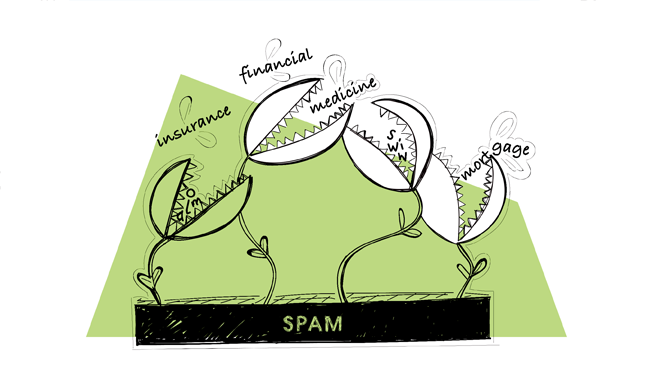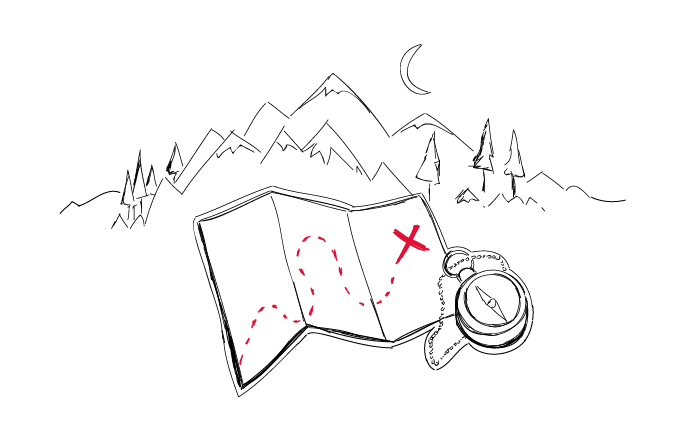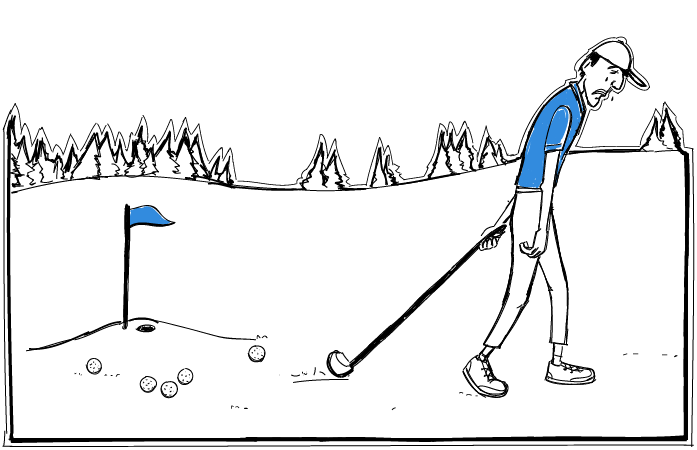Have you ever felt like that? You’ve sent a cold email campaign and you’ve got poor response. “Argh, this just doesn’t work for me…” I bet most of us have thought that to themselves at least once. In moments like that, we are usually demotivated and we feel helpless. We feel like we want to give up. But if you give up too soon, you might miss a lot of opportunities.
Before giving up on cold emailing, you can do at least 12 things to verify if cold emails really don’t work for you, or if they haven’t work for you because you were missing something in your approach. See what you can do.
For starters, one crucial realization
Cold emailing is not supposed to be easy.
I know you might have read or heard somewhere that it is the gold solution for lead generation. But no one says how much time and research it takes to work out a system for outbound emailing that actually brings a steady influx of leads to a company.
In fact, I haven’t heard of a person who launched their first cold email campaign and immediately got amazing results. It takes a lot of strenuous research and numerous tests to make cold email outreach truly work. The research takes time. The tests take even more time.
So if you’ve been expecting immediate results from your first campaign, you may (and probably will) be sorely dissapointed.
The first thing to realize is that: if your first campaign didn’t work the way you expected, you may have had wrong expectations.
Expectations vs. reality
If you had expected a spectacular success and hundreds of new hot leads, and instead you got just a bunch of negative responses or no responses at all – trust me, you’ve just become a member of a very large group of cold email senders.
In truth, when starting with cold emailing, you should be rather prepared for numerous attempts and tests that will end up with failure before you will see positive responses.
That’s weird, right? Everyday I’m working on marketing a cold email automation software, so why would I tell you it’s difficult? I should be telling you cold emailing is a simple, no-brainer solution for all your sales problems. You just write a couple emails, set them up to be sent, and you get tons of positive replies, right?
Well, I could say that. But that would be just wishful thinking.
And I don’t want you to plan your sales outreach process on wishful thinking. I want you to take a realistic look at cold emailing, and I need you to accept that an essential part of mastering cold email outreach is failing.
The good thing about failing, though, is that…
Failure is the first step towards making cold emails work for you. Negative responses, lack of responses, low open rates, high bounce rates, and all the bad stuff that may have happened to you – they’re all feedback.
The good things, like high open and response rates, high deliverability, numerous positive responses – those are feedback as well.
And you need to be prepared for both kinds of feedback.
The feedback, both positive and negative, helps you learn. And the only way to get feedback in this particular context – cold emailing (with your product/service and your prospect group) – is a lot of practice.
Come to think of it, practice and feedback are necessary to master any field. That’s something I learned from Daniel Kahneman, psychologist, Nobel Prize Award winner.
So don’t treat unsuccessful cold email campaigns as failures. Treat them as feedback. And don’t treat the time you spent on preparing the campaigns as lost. Treat it as a time spent on necessary practice.
Now, after this short prelude about some fundamental assumptions and misguided expectations about cold emails, let’s get to practice…
12 things to do before you say “Cold emails don’t work for me…”
The key to succeeding in your cold email campaigns is to learn how to use feedback to improve the outreach process. Also the negative feedback.
So what are the actual symptoms that make you think “cold emailing just doesn’t work for me”?
a) you get negative replies,
b) you get little replies, or no replies at all,
c) you get positive replies, but you can’t turn them into deals.
If it’s mostly a), there are at least 4 things you can do about it:
- Check your emails for salesy tone. Read them out loud. If they sound like a TV commercial, rewrite the copy.
- Check your emails for egocentrism. When you read the email, how much of it is about you, and how much it is about the prospect? Personalize the email and focus on the prospect if you want them to get interested.
- Check your email for clichés and worn-out phrases. If you’re using a template you copied from someone else, realize that your prospects may have already seen that before. And that’s what may actually make them angry.
- If you get angry replies to one of your follow-ups, check the frequency settings of your follow-ups. If you’re sending too many messages in a short period of time (and separated by even intervals), your prospects might feel overwhelmed and get irritated.
Read more about What to Do When You See Negative Replies to Your Cold Emails? >>
If it’s mostly b), that is your reply rates are low, you can take at least 5 actions:
- Check your open rates, for starters. If less than 70-80% of your messages get opened, there may be some problems with deliverability or your subject line scares off the prospects. In such a case, perform the 14 deliverability checks, and then test other versions of the subject line.
- Count the sentences and words in your email. Try to shorten the message. Your prospects may not even read the whole of it, just because it’s too long.
- Check your emails for egocentrism and salesy tone. If you write too much about your product features instead of showing some actual benefits to your recipients, they will lose their interest in no time. If they’re not interested, they will ignore your message.
- Read your call to action. Do you clearly state in your email that you want your prospects to reply? Do you ask them an easy-to-reply-to question? And if you do ask them for something, don’t you ask them for too much?
- Think about your target group. Why did you choose to contact them in the first place? Are they actually a group that may be potentially interested in your solution? Is your pitch attractive to them? Think about your ideal customer profile. If you see no replies, perhaps your offer is not the right match to the group of companies you’re trying to contact. Test the same campaign on a different prospect group and compare the results.
If it’s mostly c), so you get replies, but in the end your prospects are not interested in buying anything from you, you can:
- Think about how fast have you been reacting to their replies. Are you there to pick up the conversation as quickly as possible? If not, try to shorten the time between a reply from the prospect and your response.
- Have you been engaging in a conversation? Or have you been trying to quickly push your prospects to self-service? By reaching out via email, you start a human-to-human relation. By responding to your email, your prospects express their will to develop that relation. If you try back out of this personal approach too soon, they might feel neglected, and thus, lose their interest.
- You can try to talk to the prospects about your service rather than sell to them. If they reply to your messages and are open to talk, embrace this opportunity and learn as much as you can. Perhaps your prospects will tell you why they are not eager to buy your product or service. Once you know that, you’ll know what to change or improve.
Read more about What to Do When You Get an Interested Reply to Your Cold Email? >>
To take away
So to sum up:
If you thought cold emailing will be easy and effortless, sorry – you were wrong. You can hire tools like Woodpecker to automate parts of the process, but you can’t expect automation to magically bring you leads.
You are the one to work out the lead generation process. You need to work on your targeting, your messages, your deliverability and optimal campaign settings. And the chances that you will nail it at your first attempt are very poor.
But that doesn’t mean it’s not worth your time. All you need to do is practice and test to collect feedback. Then you need to use that feedback to improve your approach and make it more and more effective with time.
It’s like with riding a bike, cooking, or playing golf. You don’t just show up and become a master overnight. You need to fall a few times before you know how to ride. You need to cook a few bland soups before you learn to use spices. And you need to miss many times before you hit the cup.
So don’t give up before you’re sure there’s nothing else you can do to make things work.
READ ALSO

A Pain of Cold Emailing in Finance and Real Estate: How to Get Through SPAM Filters?
What differentiates cold emailing from other types of 1-to-1 outbound practices is that a huge chunk of a cold emailing process can be automated. You just come up with an email copy, insert a few snippets, add your prospects, and there you have it. A campaign is ready to be sent. You don’t need to send it manually. Still, outreach by email may quickly backfire when you riddle your copy with words that trigger SPAM filters. Words such as ‘insurance’, ‘financial’, ‘medicine’, ‘mortgage’ all alarm SPAM filters. But what if that is the vocabulary you use in your profession on a daily basis? How to avoid going to SPAM then?

Step-by-Step Practical Guide to a Cold Email Campaign That Gets Delivered
Sending an automated cold email campaign is just a start. In the end, you want your emails to actually get to your prospects' inboxes. And to make that happen, it's crucial that you properly plan and set up your cold email campaign in every detail. I wrote this post in cooperation with our Support team and our Head of Integration & Deliverability, because we observed that many of our users still need help when it comes to properly adjusting their cold email campaign settings.

Getting Started With Outbound Outreach: Are You on the Right Track?
Getting a good grasp of email deliverability from the very beginning is essential not only for the future success of your campaigns but also for your domain safety. I’ve conducted some research to find out what cold email senders should pay attention to when they want to increase their cold email deliverability rate. Let’s see what I’ve found out.

